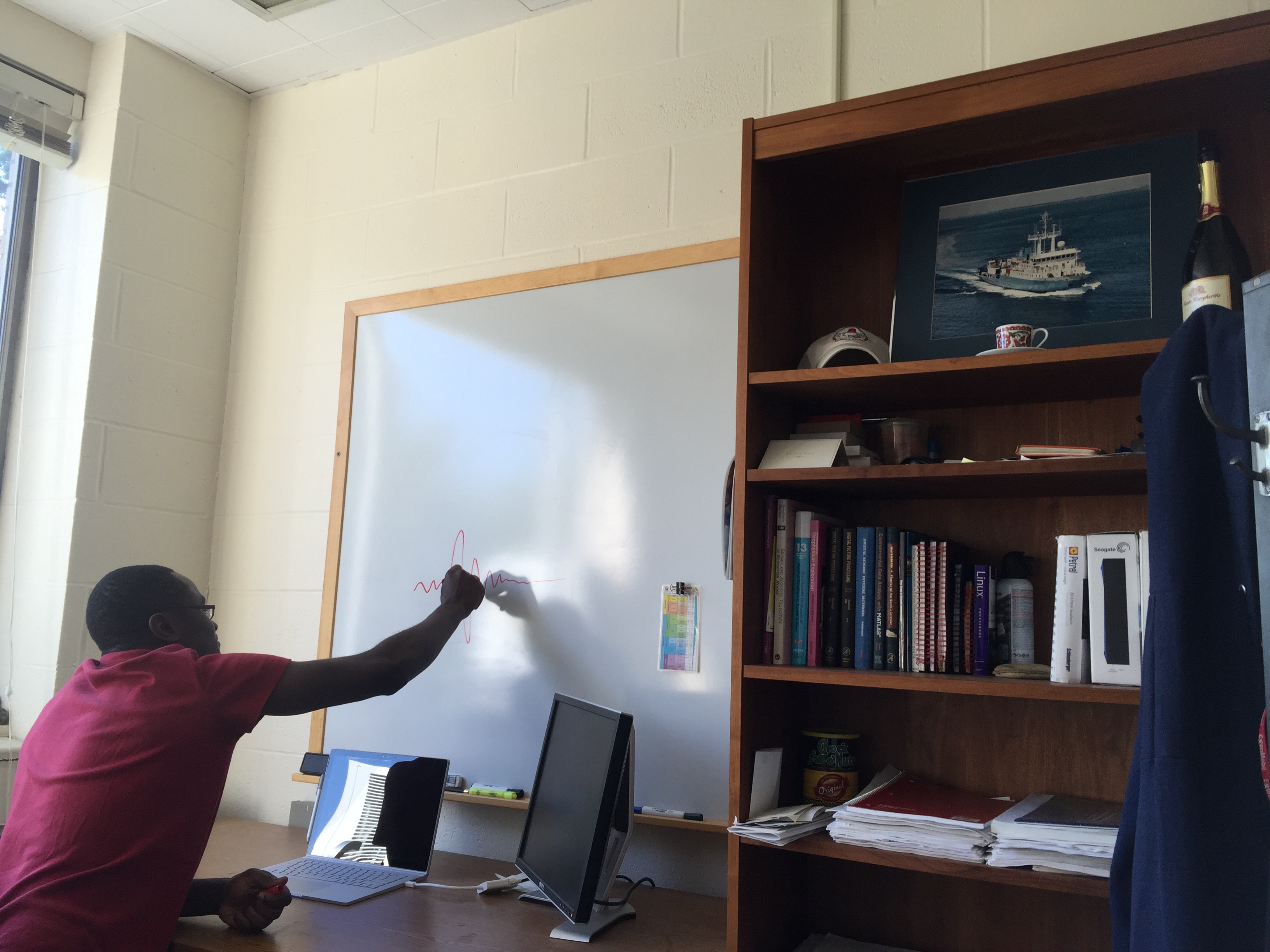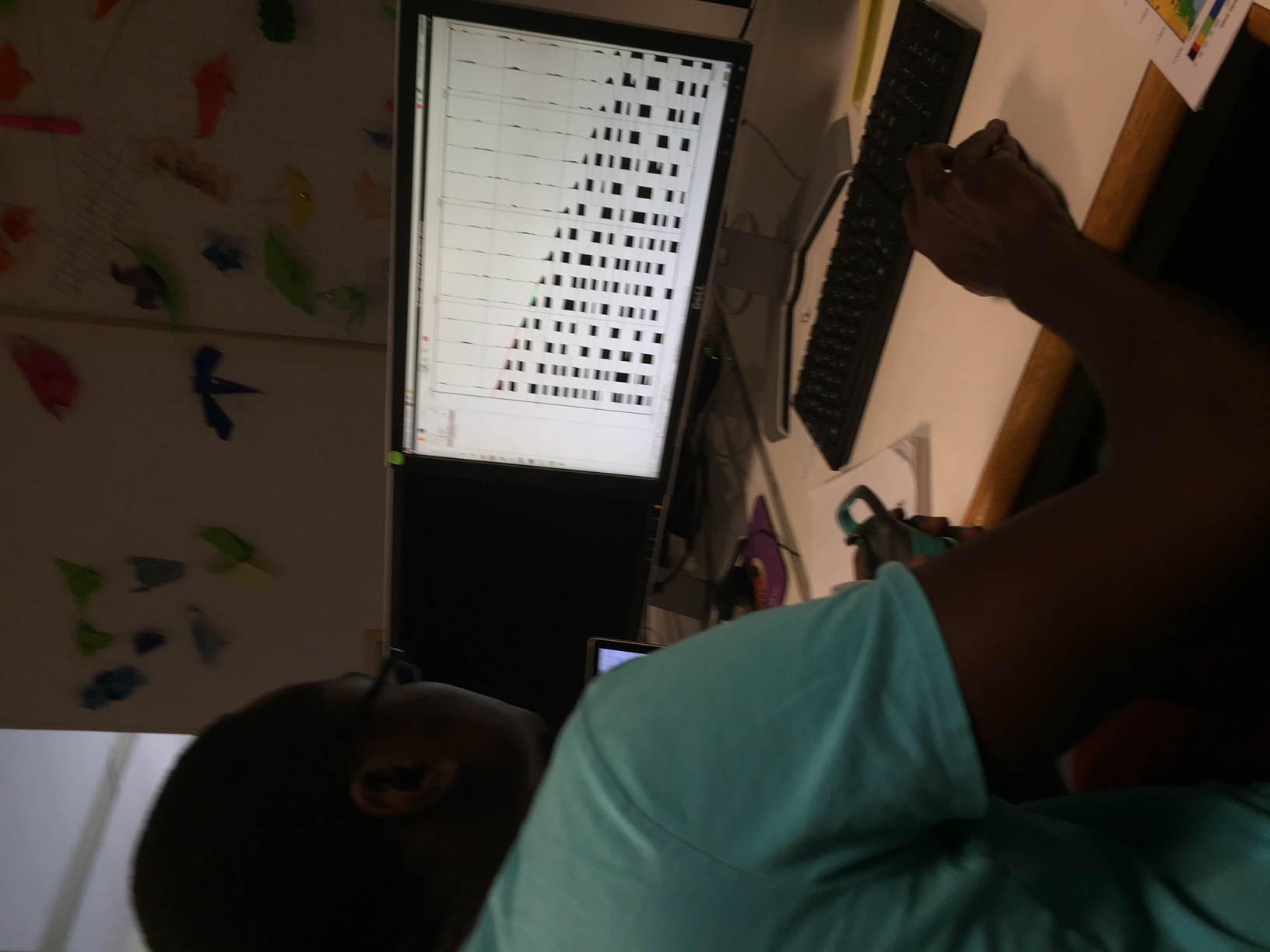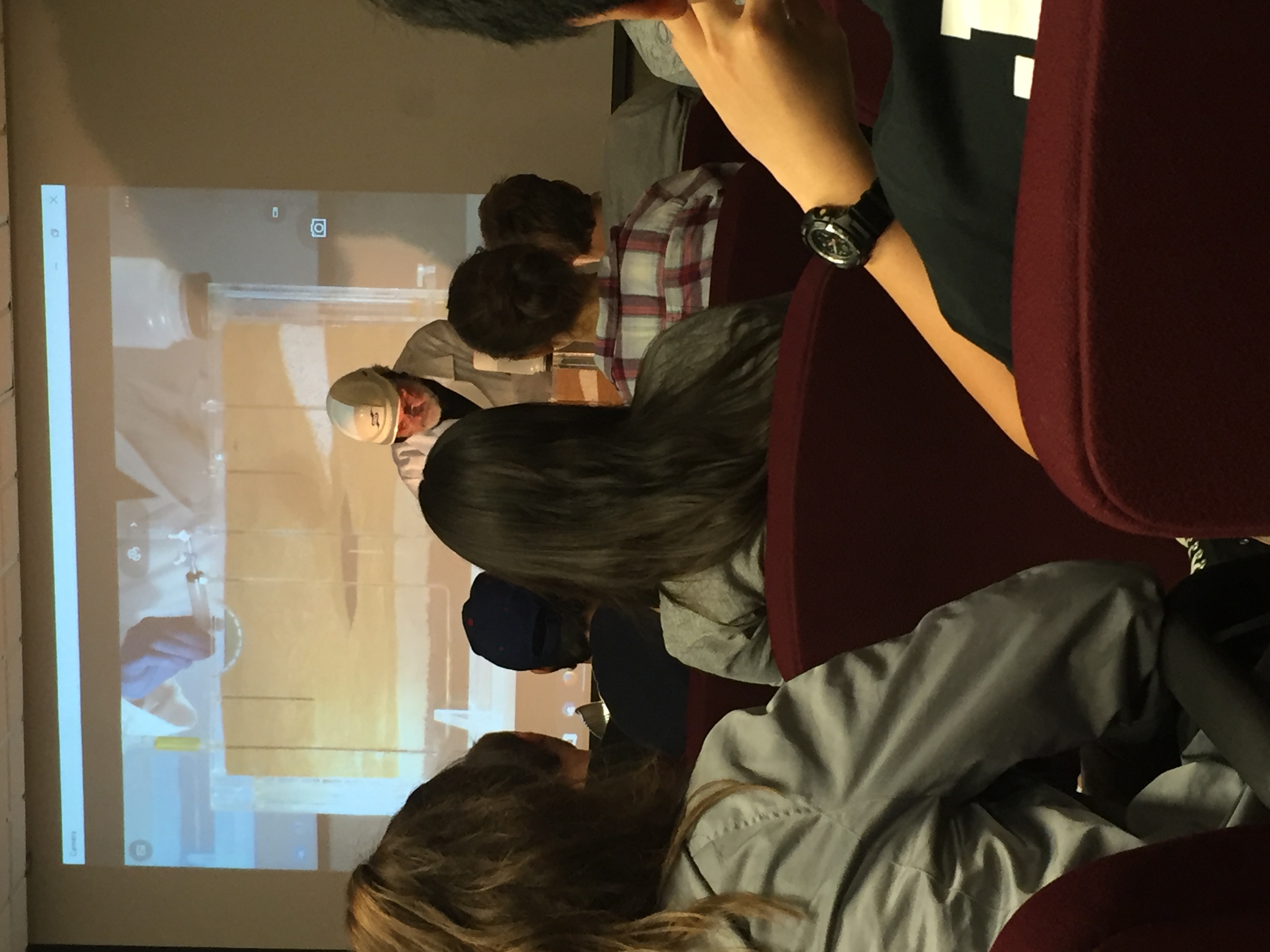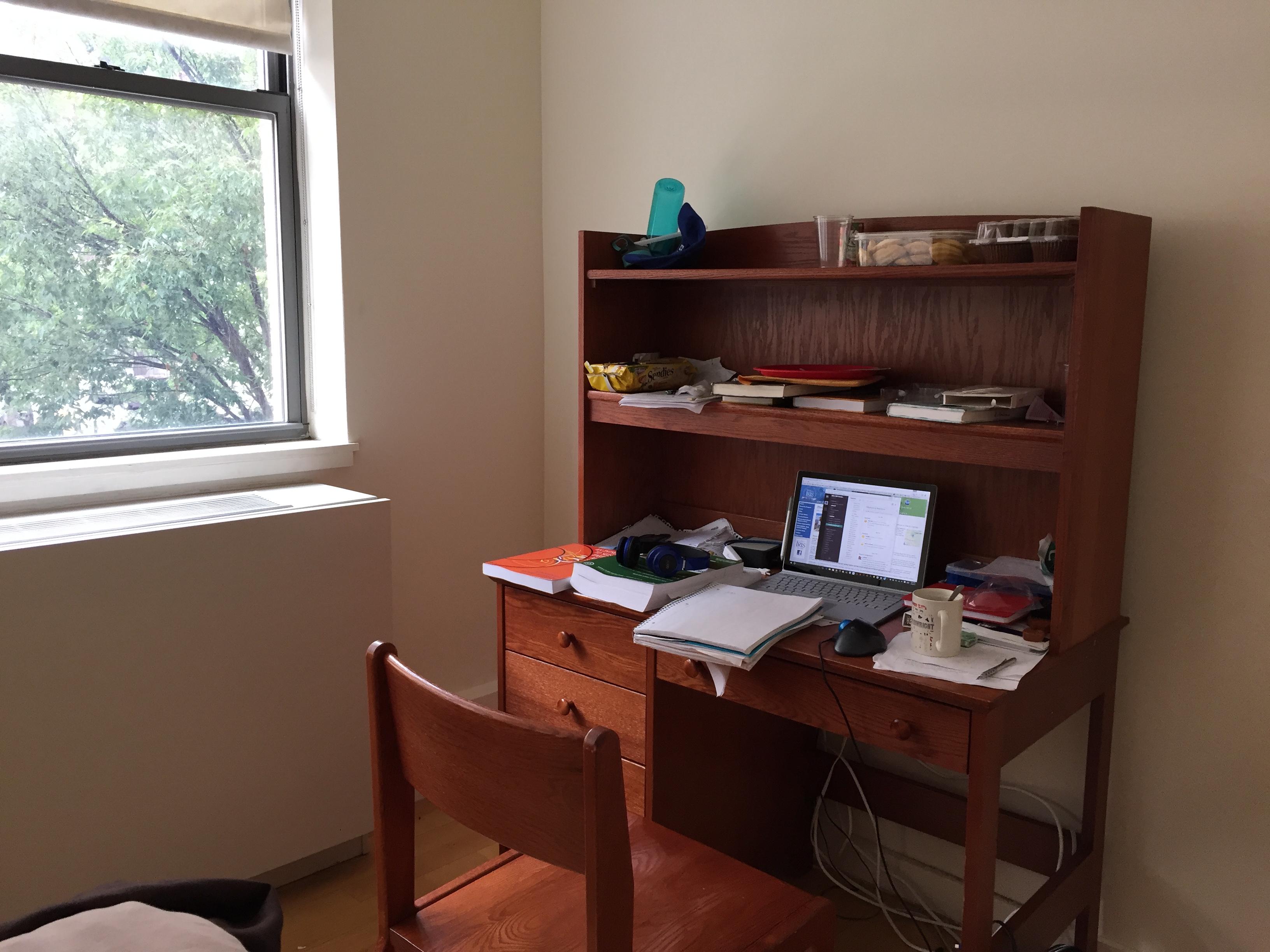Evans Onyango
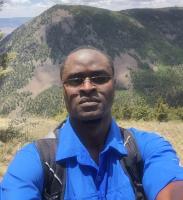
Evans Onyango is a student at University of Houston currently completing his research at Lamont-Doherty Earth Observatory under Dr. Donna Shillington .
The main aim of the project is to characterize the crustal structure of the lake Malawi rift using seismic reflection and refraction. Lake Malawi is the southernmost segment of the East African rift system. And it appears to be actively rifting today. This study could therefore give us a better understanding of how segments along rift system develop as a divergent plate boundary is formed on a continental plate.
Week #6: Preparing for the LDEO poster presentation.
July 31st, 2016
In addition to making a poster and writing an abstract, we will be creating advertisements for our posters. These adverts will be accompanied by 1-minute presentations on why people should come see our posters. The slide is done (see below). And now I need to work on the presentation part. Luckily, we had a communicating science webinar and assignment a few weeks back. I'll dust it up and refine it a little.
.jpg)
Week #5: Ahoy Mateys!
July 31st, 2016
This was a great week! It started out a little rough...got rained on that Monday (I mean thoroughly rained on). Tuesday was so hot (Almost 90 F at 9am in the morning). And the looming deadlines were not going anywhere. Then Wednesday rolled around....
Dr. Shillington organized a field trip to the Research Vessel Marcus G. Langseth which is owned by the NSF and operated by Columbia university. We were lucky it was docked nearby before it left for another cruise. I don't know if seismology gets any better than this!
R/V Marcus G. Langseth.
All Aboard!
Chart a course to...
Where the science happens!
Needless to say, the rest of the week went pretty smoothly.
Week #4: The office edition.
July 16th, 2016
I believe that being an intern at the Lamont-Doherty Earth Observatory has provided me with a great snapshot of the life of an earth science researcher. Many of the researchers I have encountered have offices but they are rarely in them. They are either in the field or in the laboratory running experiments. My mentor gave us a comfy office with a wonderful view of the Hudson river (Figure1). But we choose to spend most of our time in the computer/server room (Figure2) where it is considerably colder and windowless. And it's because the computers in this room have everything we need for seismic processing. There are also around two scientific talks and lectures weekly which many interns, students, and professors attend. The lecture on Figure3 below is on hydraulic fracturing. And finally, there is the home office (Figure4). This is where I finish up any work that wasn't finished on campus.
Figure1.
Figure2.
Figure3
Figure4.
Week #3: Velocity Modelling and exploring the Palisades.
July 9th, 2016
This week I got my initial velocity models. These preliminary results are solely from first arrivals and so the resolution of the features should improve with the addition of second arrivals and so on. The RAYINVR package which is mostly written in Fortran 77 was used for the 2D-ray tracing and Travel-time inversion model and the FAST package also mostly written in Fortran 77 was used to create the first arrival traveltime tomography model.
.png)
Figure1: RAYINVR model.
.png)
Figure2: FAST model.
I also got hike the trails of the Palisades this week. I got to walk by the Hudson River from Lamont all the way to the New Jersey boundary monument. Along the way, we encountered a snake, squirrels, deer and we found a geodesy benchmark in the woods.
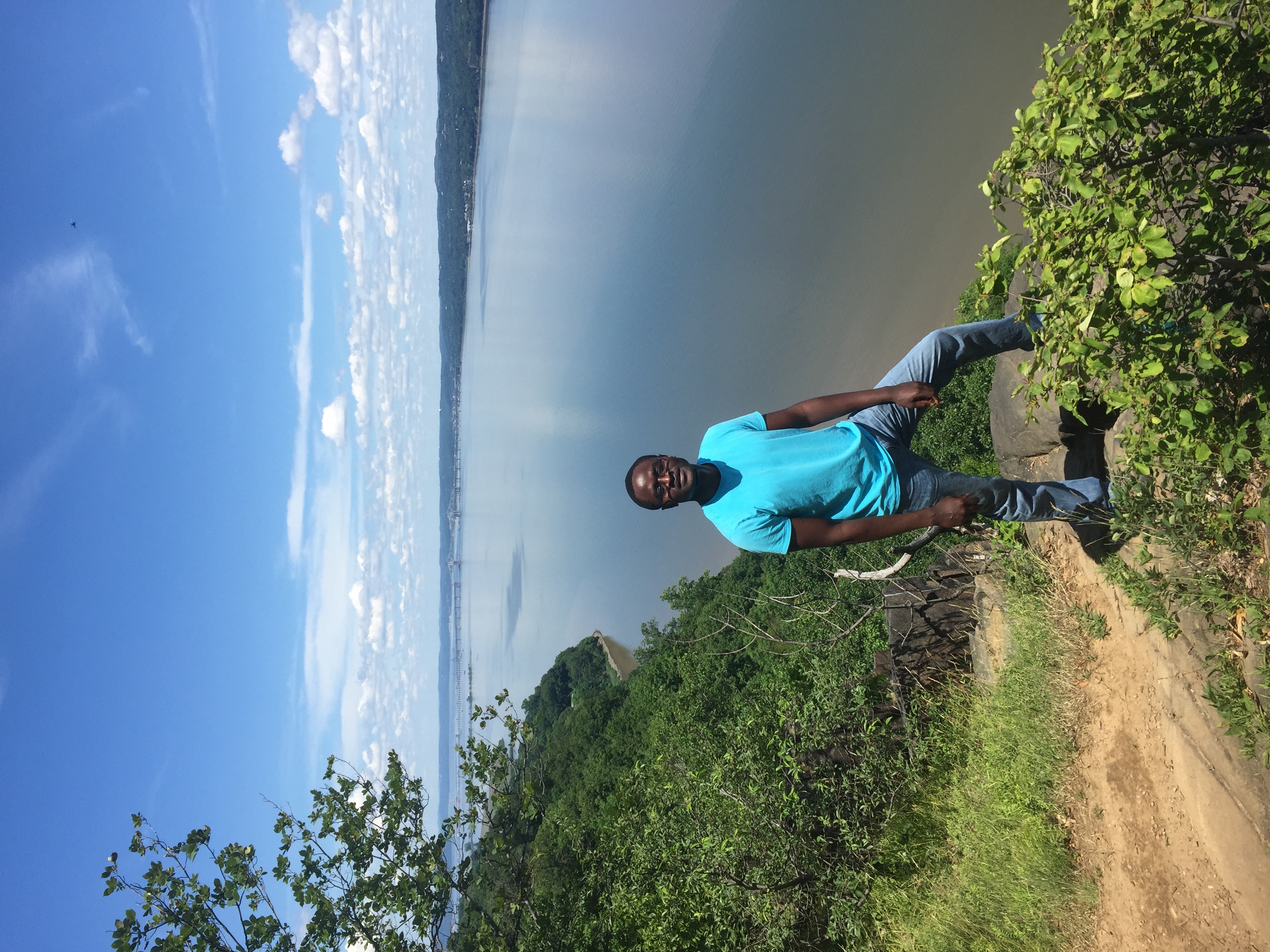
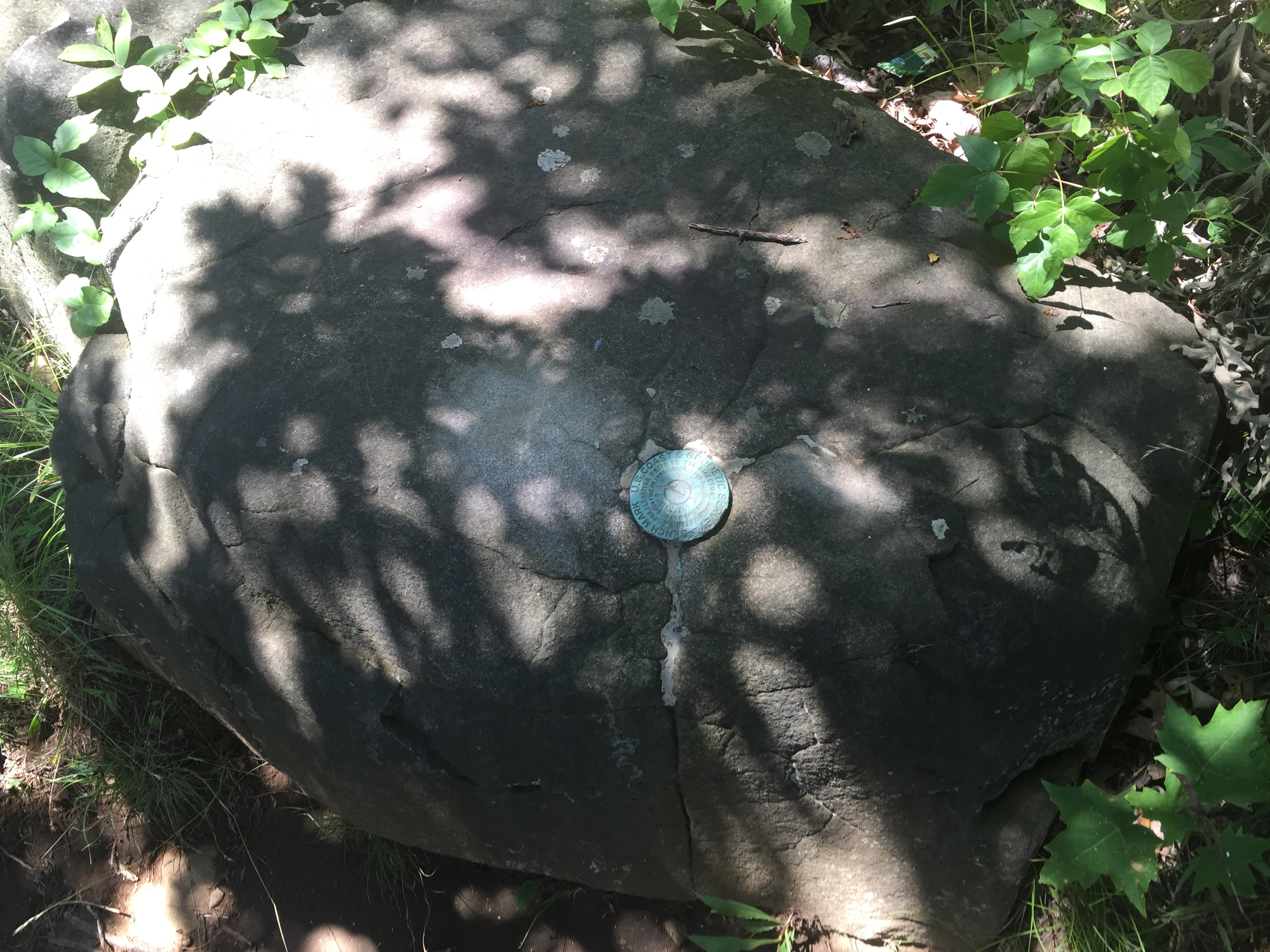
Week# Assignment:
Developing good elevator speeches is a useful skill to me as a scientist to because it will allow me to clearly explain my research to friends and family. And also to colleagues that may not be in my field of study. I also think this skill will come in handy this Fall when I'll be talking to potential Graduate school mentors when I'll be outlining my IRIS research and other research experiences. Lastly, it's just a great way advertise/plug your expertise whenever you introduce yourself.
Second full week and all is well.
June 19th, 2016
This week I got alot more seismic processing done. I picked almost all the horizons on OpendTect for several Ocean Bottom Seismometers and multichannel seismic survey lines that were assigned to me. At the end of the week I was able use those velocities to do some ray inversion.
I'm working on active source seismic data from the lake Malawi segment of the East African Rift system. The data was acquired in the spring of 2013. It consists of both onshore and offshore reflection and refraction data. This makes it an ideal dataset for continental rifting research because the datasets compliment each other. In other words, the refraction data is great for providing a regional picture but has low resolution while the reflection data will not go as deep but provides higher resolution of the sedimentary layers and structures.
Besides my mentor and other collaborators, I believe I'm among the first people to use this data. Some basic filtering had been done on the data before I got it.
The skill from the rubric that i'd like to reflect on this week is 'Knowledge within one's field and related areas.' Being proficient on this skill means that I'll be able to understand and may be even explain a geological process like rifting adequately using more than seismology alone. Knowledge seismology and related areas important because I'll be able to approach my research from a different angle and see if I come to the same conclusion. Luckily SEGMeNT is a collaborative project that has scientists from other fields such as Geodesy on board. My plan is to attend all the brainstroming sessions and learn as much as I can and see what I can incorporate in my research.
End of first full week at Lamont.
June 12th, 2016
I have officially finished my first full week at my placement. So far I've learnt my way around the campus, bus stop, grocery store and of course the five guys burger joint.
By the end of my time at Lamont my goals are to:
a) Be able to independently create and run job flows that will read-in, calibrate, filter and perform a velocity analysis on seisSpace proMAX seismic processing software and OPenDetect software.
b) Understand the plate tectonics as it relates to rifting and segmentation.
c) Be able able to put a) and b) together during the interpretation phase of the project so as to create my final poster.
I spent the whole of last week working on both reflection and refraction data using both seisSpace and Opendetect. I hope to be able to load data and run a job from start to finish with minimal assistance by the end of the week. Stay tuned.
Awesome IRIS orientation week!
June 3rd, 2016
Great week at the NMT campus in Socorro! Saw pictographs at Arroyo del Tajo!



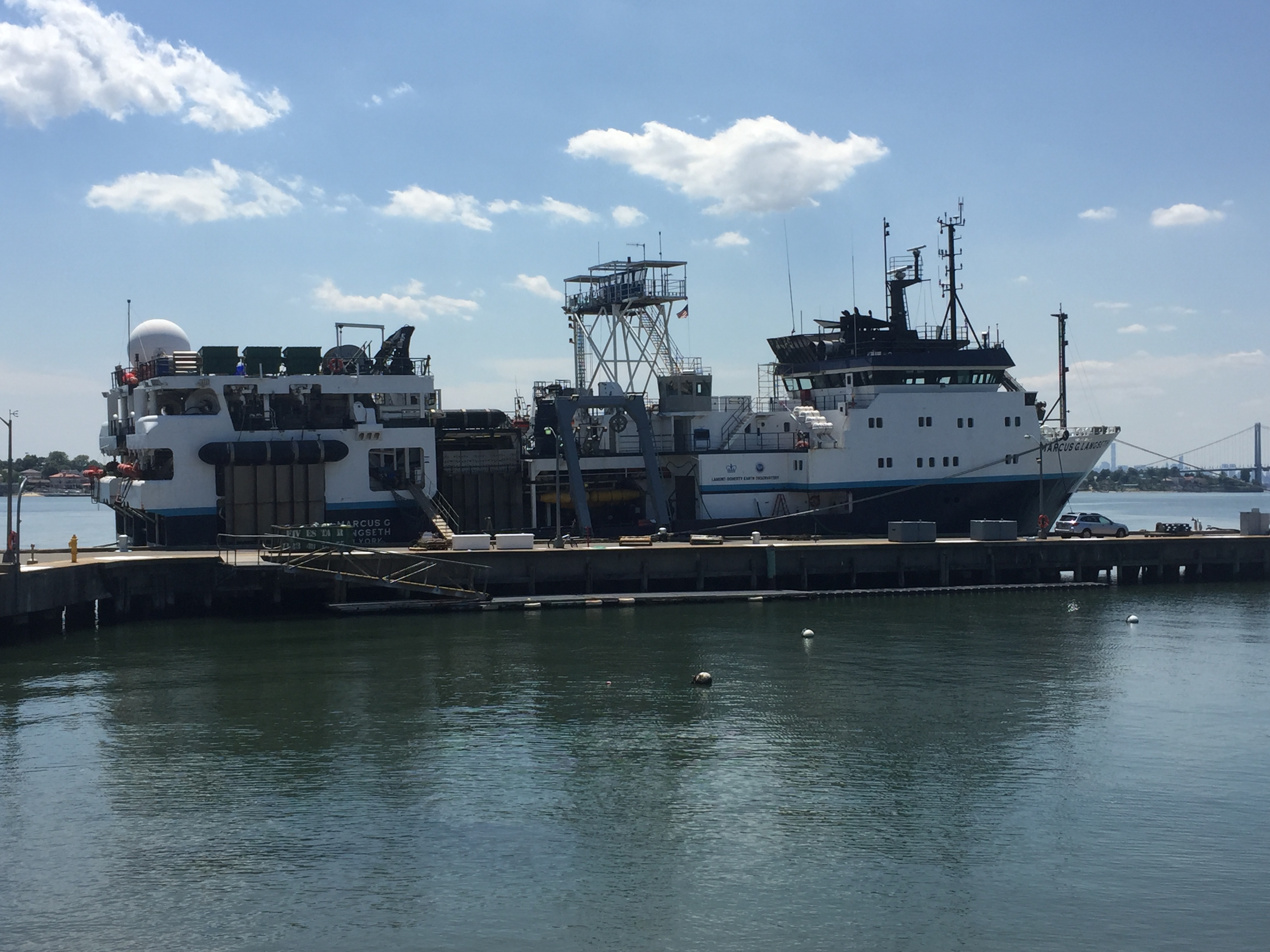
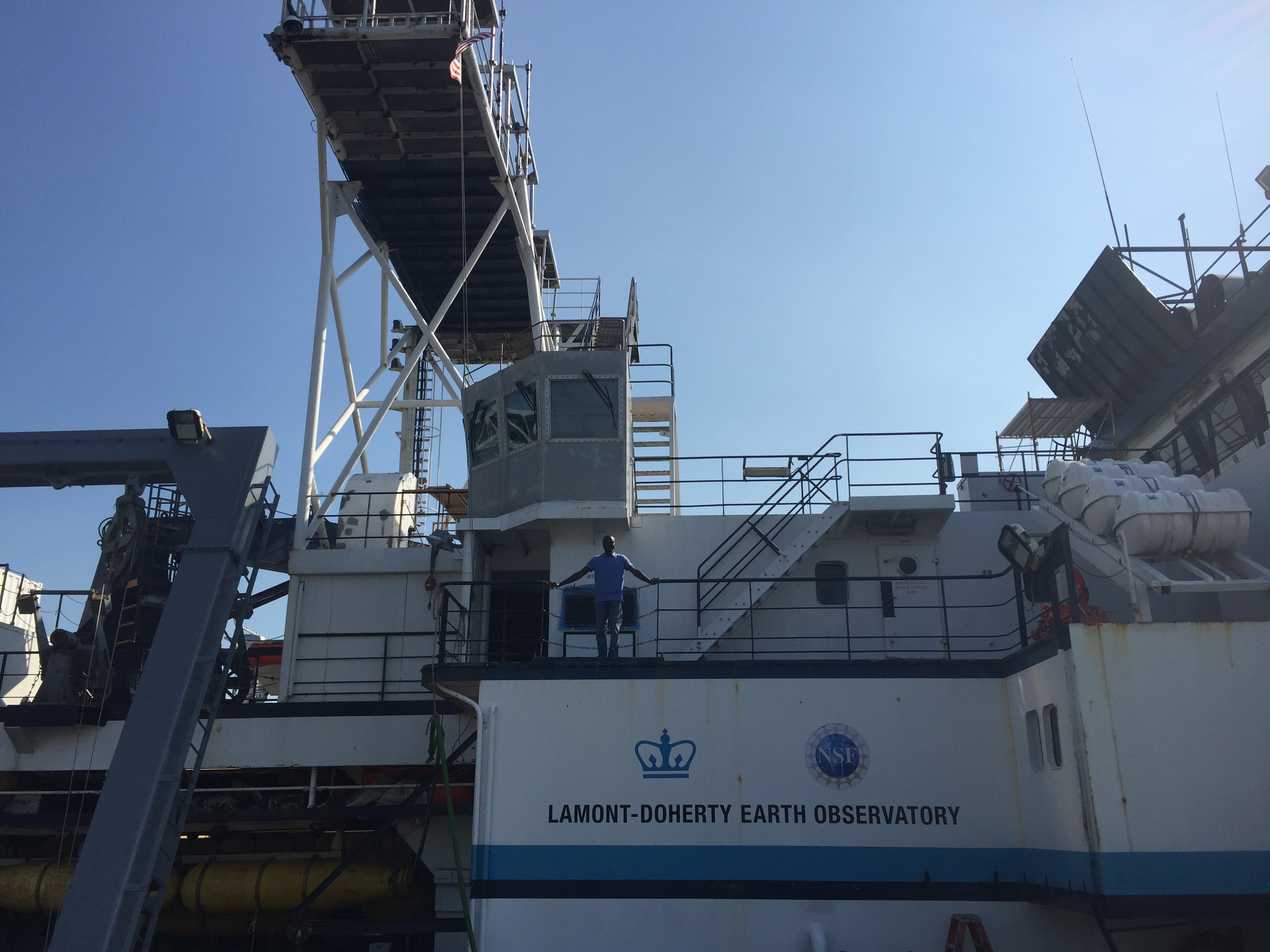
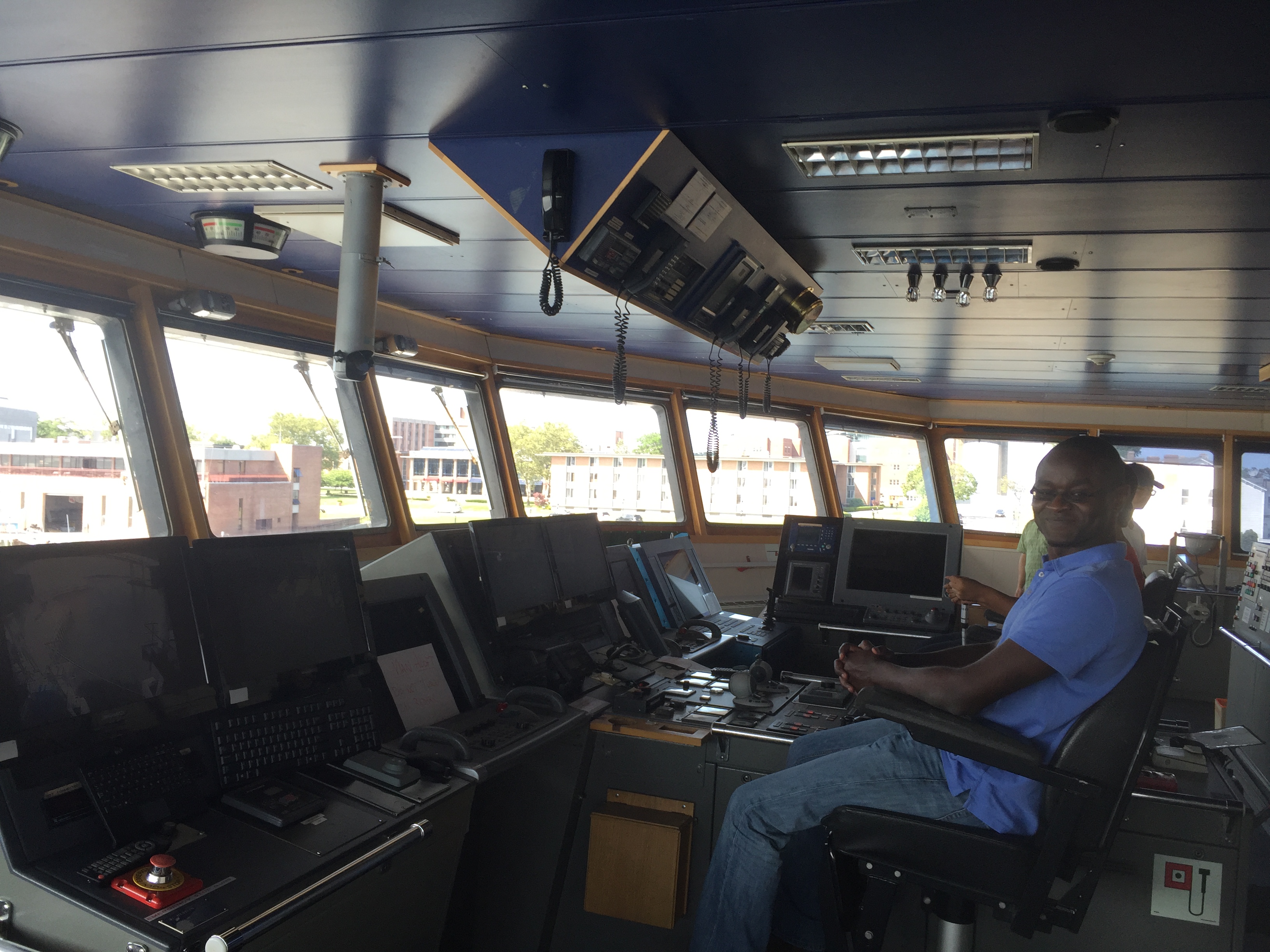
.JPG)
